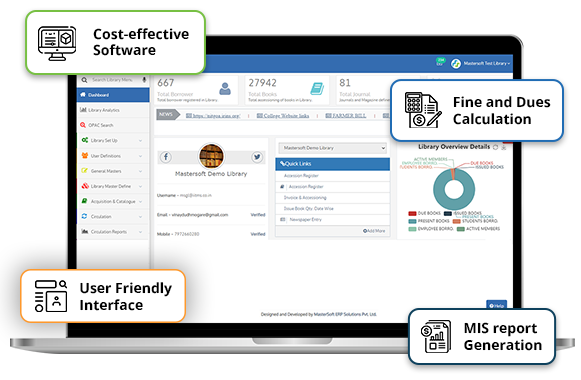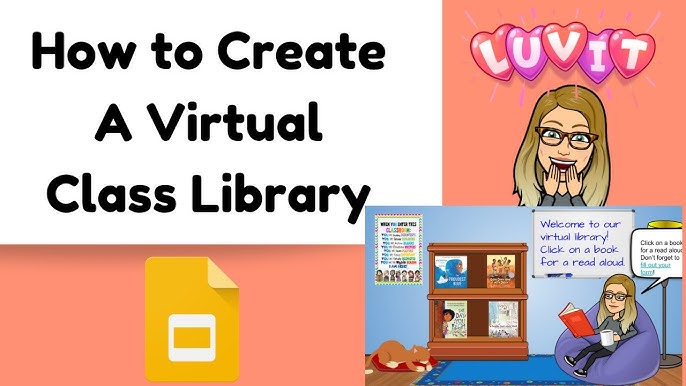In today’s digital age, a virtual library is an essential resource for any educational institution. It allows students, teachers, and parents to access a wide range of educational materials and resources from anywhere, at any time. Creating a virtual library section on your school website can enrich the learning experience, promote reading, and enhance academic success. Here’s how to create an effective and engaging virtual library for your school’s website.

Table of Contents
Toggle1. Plan Your Virtual Library Structure
Before diving into design and development, it’s important to plan the structure and purpose of your virtual library. Start by considering the audience: students, teachers, and parents. Think about the types of resources they need, such as:
- eBooks and audiobooks
- Academic papers and research articles
- Videos and documentaries
- Study guides and worksheets
- External links to educational websites and databases
Group resources into clear categories such as fiction, nonfiction, textbooks, grade-specific content, and subject-specific materials for easier navigation.
2. Choose the Right Platform
When it comes to building a virtual library, selecting the right platform is crucial. There are several ways to integrate a virtual library into your school website, depending on the platform you are using. You can either:
- Embed third-party library software like OverDrive or Destiny Discover.
- Create a dedicated section within your Content Management System (CMS), such as WordPress or Joomla.
- Develop a custom virtual library platform, especially if your school has specific needs that off-the-shelf software doesn’t meet.
Ensure that the platform is user-friendly, responsive on mobile devices, and integrates well with your school’s existing website.
3. Organize Content for Easy Navigation
A well-organized virtual library makes it easy for users to find what they need quickly. Structure your library with easy-to-follow navigation and filters. Use clear categories, subcategories, and search functionality to improve the user experience. For example:
- Allow users to search by grade level, subject, or type of resource (e.g., eBook, video, worksheet).
- Include a search bar to let users quickly find specific books, authors, or topics.
- Incorporate tags for popular genres, topics, or subjects.
Use breadcrumb navigation so users can easily trace their steps and go back to previous sections.
4. Offer Downloadable Resources
A key feature of any virtual library is the ability to download or access materials on demand. Provide downloadable PDFs, ePub formats for eBooks, and links to external resources like research articles or educational platforms. Ensure that the resources are compatible with different devices, including tablets, smartphones, and e-readers.
Include instructions on how to access and download materials to ensure that all users, especially younger students and less tech-savvy parents, can navigate the platform with ease.
5. Incorporate Multimedia Content
A virtual library is not limited to just books. Include a variety of multimedia resources, such as:
- Educational videos and documentaries
- Podcasts and audiobooks
- Interactive study tools and quizzes
- Recorded lectures and webinars
Multimedia resources can engage students in different ways and cater to various learning styles. Incorporating video content, in particular, can make subjects more interesting and accessible to students who prefer visual learning.
Embed videos directly on your website to make it easy for users to access them without needing to leave the site.
6. Ensure the Library Is Mobile-Friendly
In today’s world, students and teachers are increasingly using mobile devices to access information. It’s important to ensure that your virtual library is fully optimized for mobile devices. A mobile-responsive design will allow students to easily navigate, search, and access materials from smartphones and tablets.
Test your virtual library across different devices and browsers to ensure a consistent user experience.
7. Create a Login Portal for Personalization
To offer a personalized experience, consider creating a login portal where users can:
- Save their favorite resources.
- Create custom reading lists.
- Receive recommendations based on their interests and previous usage.
- Track their reading progress for ongoing projects or assignments.
A personalized experience will encourage students to spend more time using the virtual library and make it easier for teachers to recommend specific resources to their students.
Use Single Sign-On (SSO) systems to streamline access for students and staff, allowing them to use their existing school login credentials.
8. Include Research Tools and Databases
One of the major benefits of a virtual library is access to a range of research tools and educational databases. Ensure your library links to trusted databases and research platforms such as:
- Google Scholar
- JSTOR
- EBSCOhost
- ERIC (Education Resources Information Center)
Including these tools will allow students to conduct more thorough research for projects, essays, and assignments.
Provide guidance on how to use these databases effectively, including video tutorials or guides.
9. Incorporate a Blog or News Section
Add a blog or news section to keep users informed about new resources, featured books, reading challenges, or library events. This will help promote the virtual library and keep students engaged with fresh, updated content.
Feature student reviews of books, or create a “Librarian’s Picks” section for additional recommendations to spark interest in new materials.
10. Provide Virtual Assistance
Sometimes, students may need help navigating the library or finding specific resources. Consider adding virtual assistance features like:
- A chatbot or live chat function where students can ask questions and get help in real-time.
- Video tutorials or help pages with FAQs that guide users on how to navigate the library, search for materials, or use specific resources.
If possible, include a virtual librarian feature where users can book time with a school librarian for research guidance or resource recommendations.
11. Promote the Virtual Library
Once your virtual library is set up, it’s important to promote it to your school community. Use:
- Email newsletters to announce new resources and updates.
- Social media platforms to share interesting content and reminders about available resources.
- Flyers and posters in physical spaces like the school library or hallways.
Host virtual events, like book clubs or reading challenges, to drive engagement and encourage frequent visits to the virtual library.
12. Monitor and Update Content Regularly
A virtual library should be a living resource that grows and evolves over time. Monitor which resources are most popular, regularly update the library with new materials, and remove outdated or unused content. An up-to-date virtual library will keep students engaged and ensure the resources remain relevant to their studies.
Use analytics tools to track user behavior and identify areas for improvement or resources that need updating.
Conclusion
Creating a virtual library section on your school website is a valuable investment that enhances learning by providing easy, on-demand access to educational resources. By planning carefully, choosing the right platform, organizing your content effectively, and ensuring mobile compatibility, you can create an engaging and accessible virtual library that serves the entire school community.


No responses yet